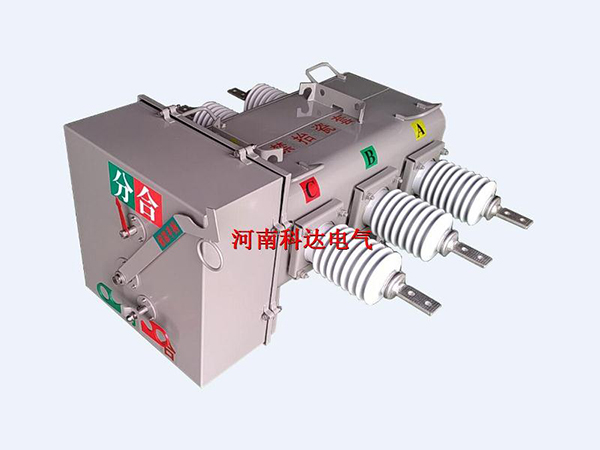
The circuit breaker is generally composed of contact system, arc extinguishing system, operating mechanism, release, shell, etc.
In case of short circuit, the magnetic field generated by large current (generally 10 to 12 times) overcomes the reaction spring, the release pulls the operating mechanism to act, and the switch trips instantaneously. In case of overload, the current increases, the calorific value intensifies, and the bimetallic sheet deforms to a certain extent to promote the action of the mechanism (the greater the current, the shorter the action time).
For the electronic type, the transformer is used to collect the current of each phase and compare it with the set value. When the current is abnormal, the microprocessor sends a signal to make the electronic release drive the operating mechanism.
The function of the circuit breaker is to cut off and connect the load circuit and cut off the fault circuit to prevent the expansion of the accident and ensure safe operation. The high-voltage circuit breaker shall disconnect the arc with 1500V and current of 1500-2000a. These arcs can be elongated to 2M and still continue to burn. Therefore, arc extinguishing is a problem that must be solved for high voltage circuit breaker.
The principle of arc blowing and arc extinguishing is mainly to cool the arc and reduce heat dissociation. On the other hand, arc blowing lengthens the arc to strengthen the recombination and diffusion of charged particles, and blow away the charged particles in the arc gap to quickly restore the insulation strength of the medium.
Low voltage circuit breaker, also known as automatic air switch, can be used to turn on and off load circuit, and can also be used to control infrequently started motor. Its function is equivalent to the sum of some or all functions of knife switch, overcurrent relay, voltage loss relay, thermal relay and leakage protector. It is an important protective appliance in low-voltage distribution network.
Low voltage circuit breaker has many protection functions (overload, short circuit, undervoltage protection, etc.), adjustable action value, high breaking capacity, convenient operation, safety and other advantages, so it is widely used. Structure and working principle low voltage circuit breaker is composed of operating mechanism, contact, protection device (various releases), arc extinguishing system, etc.
The main contact of low-voltage circuit breaker is closed manually or electrically. After the main contact is closed, the free tripping mechanism locks the main contact in the closing position. The coil of the overcurrent release and the thermal element of the thermal release are connected in series with the main circuit, and the coil of the undervoltage release is connected in parallel with the power supply. In case of short circuit or serious overload of the circuit, the armature of the overcurrent release is pulled in to make the free tripping mechanism act, and the main contact disconnects the main circuit. When the circuit is overloaded, the thermal element of the thermal release generates heat, bends the bimetallic sheet and pushes the free release mechanism to act. When the circuit is under voltage, the armature of the under voltage release is released. It also makes the free tripping mechanism act. The shunt release is used for remote control. During normal operation, its coil is powered off. When distance control is required, press the start button to power on the coil.